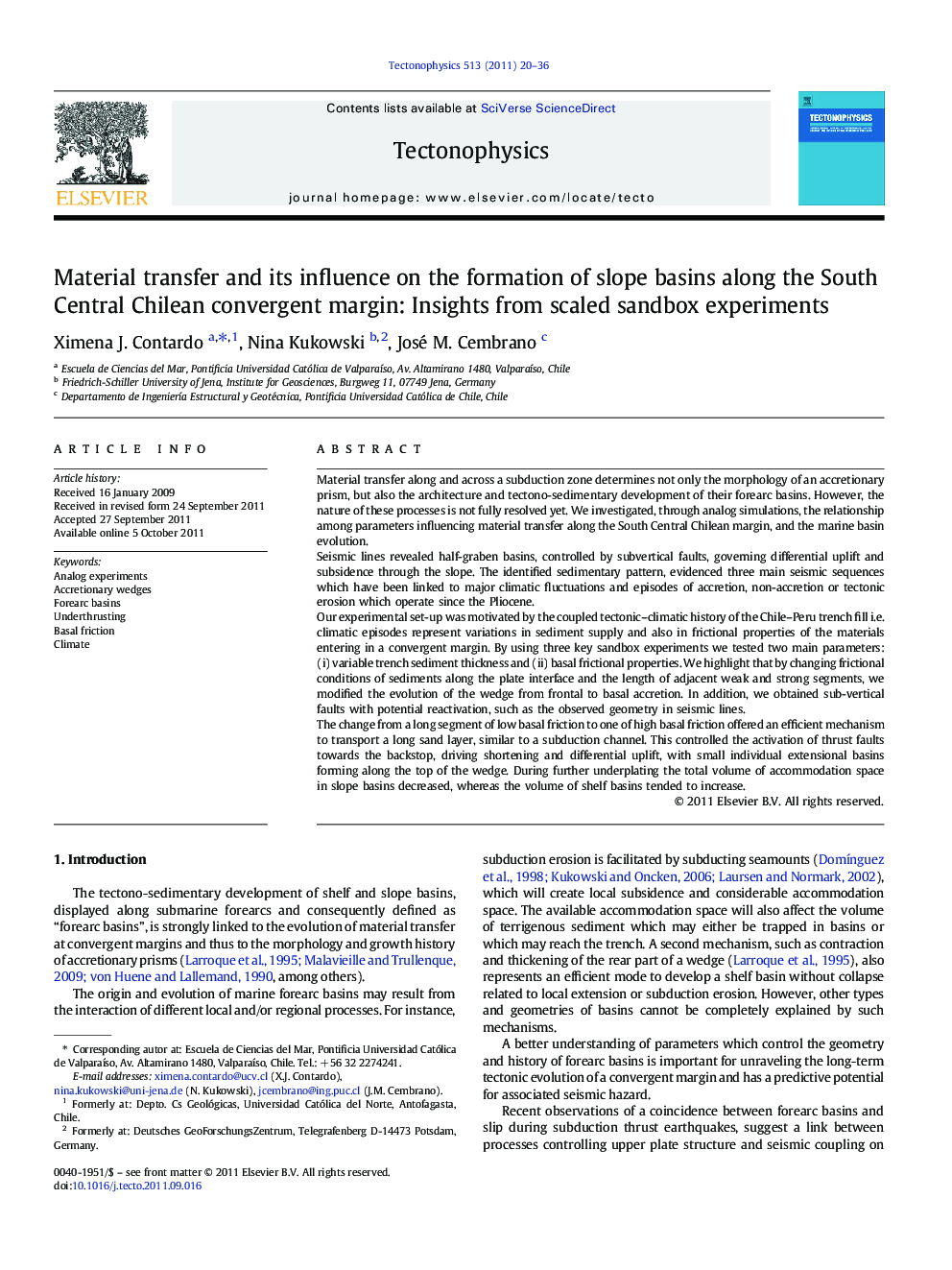| Article ID | Journal | Published Year | Pages | File Type |
|---|---|---|---|---|
| 4693004 | Tectonophysics | 2011 | 17 Pages |
Material transfer along and across a subduction zone determines not only the morphology of an accretionary prism, but also the architecture and tectono-sedimentary development of their forearc basins. However, the nature of these processes is not fully resolved yet. We investigated, through analog simulations, the relationship among parameters influencing material transfer along the South Central Chilean margin, and the marine basin evolution.Seismic lines revealed half-graben basins, controlled by subvertical faults, governing differential uplift and subsidence through the slope. The identified sedimentary pattern, evidenced three main seismic sequences which have been linked to major climatic fluctuations and episodes of accretion, non-accretion or tectonic erosion which operate since the Pliocene.Our experimental set-up was motivated by the coupled tectonic–climatic history of the Chile–Peru trench fill i.e. climatic episodes represent variations in sediment supply and also in frictional properties of the materials entering in a convergent margin. By using three key sandbox experiments we tested two main parameters: (i) variable trench sediment thickness and (ii) basal frictional properties. We highlight that by changing frictional conditions of sediments along the plate interface and the length of adjacent weak and strong segments, we modified the evolution of the wedge from frontal to basal accretion. In addition, we obtained sub-vertical faults with potential reactivation, such as the observed geometry in seismic lines.The change from a long segment of low basal friction to one of high basal friction offered an efficient mechanism to transport a long sand layer, similar to a subduction channel. This controlled the activation of thrust faults towards the backstop, driving shortening and differential uplift, with small individual extensional basins forming along the top of the wedge. During further underplating the total volume of accommodation space in slope basins decreased, whereas the volume of shelf basins tended to increase.
► The South Central Chilean margin exhibit variations in morphology and structural controls. ► Using sandbox modeling we explore mechanisms controlling evolution of marine forearc basins. ► We study material transfer and its influence on faults geometry and the sedimentary pattern of basins. ► We tested variable frictional properties and volume of incoming sediment. ► We identify variable patches of high and low friction at the plate interface as a key mechanism.
